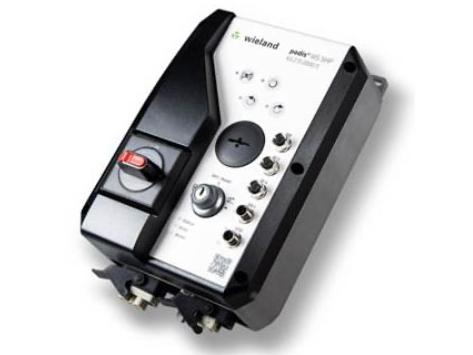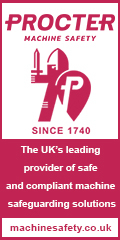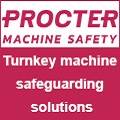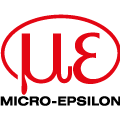
Posted to News on 6th Jan 2023, 10:53
Wieland introduces motor starter with Safe Torque Off

While safety functions have been integrated into inverters and servo drives, Kevin Cowley, safety specialist at Wieland, looks at the benefits of a motor starter with Safe Torque Off, and introduces the company’s podis MS 5HP.
Drive-based safety has been available for about 20 years. Today, it is common to specify inverter drives and servo drives with integral safety functions such as Safe Torque Off (STO) and Safely Limited Speed (SLS).
While there have been motor starters with integrated safety functions, Wieland’s podis MS 5HP differs from these in a number of ways:
- IP65 protection makes it suitable for mounting directly on the machine without an enclosure;
- AS-i fieldbus connectivity simplifies the transmission of status and diagnostic data to the machine controller and HMI; and
- The power rating is 0.25 kW to 4.0 kW, so one starter can be used with many different motors.
Typical applications for a motor starter with Safe Torque Off include conveyors and baggage handling systems. Others are end-of-line packaging equipment and machinery with constant-speed motors needing a degree of decentralised control. Note that IP65 protection and AS-i compatibility make the Wieland product better suited to these applications than motor starters with lower ingress protection ratings and no fieldbus connectivity.
Don’t think of the podis MS 5HP as a motor starter with Safe Torque Off. Instead, think of it as a decentralised motor starter that you can mount on the machine and control remotely. Consequently, you need less cabinet space and you can reduce the amount of wiring. This provides the machine builder or system integrator with savings in terms of time and copper. Importantly, the STO function enables the control system to power down the motor to a safe condition remotely.
Of course, the starter needs IP65 ingress protection for mounting on the machine. Also, to control the STO function remotely, it requires a dedicated STO signal cable. To complete the package, a user-friendly communications protocol sends status and diagnostic data to the machine controller and HMI. Wieland chose AS Interface for this.
To maximise the savings in copper, the motor starters can be connected to a power bus. However, the actual benefits will depend on the physical layout of the machine and motors. Wieland recommends its IP65 podis CON 5G6 flat energy bus and connector system because of the time savings when making connections. If preferred, you could use a different power bus system.
Whichever power bus you use, cables link the bus to the starters, then further cables connect the starters to the motors.
Power and control
You can understand the potential savings in planning time, wiring time and electrical cable if you consider the conventional approach to wiring motors. Typically, you would install the motor starters and contactors in a control cabinet. Then you have to run power cabling to all the motors. If there are lots of motors, you could have a number of power cables exiting the control cabinet and running in parallel for considerable distances in bulky cable trays.
However, there are other cables to consider, not just power. Remember that each podis MS 5HP needs separate connections for the AS-i fieldbus and STO input. And note that you cannot use the AS-Interface Safety at Work protocol to transmit STO signals over the AS-i fieldbus. Consequently, you should take into account the need for an additional amount of both fieldbus and STO signal wiring. Also, you must take care to avoid interference from the power cabling. But Wieland says the savings due to simplified planning, quicker wiring (especially if using the podis CON bus) and less power cabling outweigh the additional costs associated with the higher-specification starters and power bus.
Zoning, protection and diagnostics
For complex conveyor systems spread over a relatively large area, decentralised motor starters offer the potential for easily implementing zoning in the safety-related control system. This can help to maximise overall availability for the conveyor system.
Other benefits offered by the podis MS 5HP are the integral protection against overload, overtemperature, underload, zero current limits, phase failure and asymmetry. Motor temperature can be calculated or, alternatively, detected using a motor’s temperature sensor or a ThermoClick bimetallic switch. You can connect either of the latter two to one of the starter’s digital input ports. The starter can process the sensor signals or the AS-i fieldbus can send the sensor signals to the machine controller.
Thanks to the AS-i link, better quality status data and diagnostics can help to reduce downtime in the event of unplanned stoppages. And when the STO function is activated, the motor starter remains powered up, so status and diagnostic data is still available over the AS-i fieldbus.
With a response time of ≤250 ms, the podis MS 5HP offers a further key advantage. The STO function has a much shorter switching time than the electromechanical components used for conventional solutions. Therefore, the distance between, for example, the light grids and the machine can be shorter, which results in the reduction of space required.
Key features
Taking the detailed points from above and adding some more, here is a summary of the Wieland podis MS 5HP specification:
- Motor starter with safe torque off (STO) for Stop Category 0 (EN 60204-1), SIL 3 (IEC 61508-1/2/3 and IEC 62061) and PL e (EN ISO 13849-1) when used with a dual-channel safety relay or equivalent;
- CE and UL marked (and UKCA marked from January 2023);
- Response time ≤250 ms;
- Ingress protection rating of IP65 and NEMA 12 for mounting directly on machinery without an enclosure;
- Suitable for use with three-phase electric motors rated from 0.25 kW to 4.0 kW (0.33 HP to 5 HP) and 0.8 A to 8.5 A;
- Motor can run in either direction;
- AS interface 3.0 fieldbus connectivity;
- Dedicated port for safety-rated STO signal;
- Integrated 24 V DC supply for powering digital I/O (two inputs and one output);
- Front panel LEDs for status and diagnostics;
- DIP switches for parameterisation (changes do not take effect until mains voltage has been disconnected and reconnected);
- Motor start/stop can be controlled via the AS-i fieldbus or a digital input;
- Output for controlling motor brake (not safety-rated);
- Front panel controls for jog, forward/reverse and deactivating sensors (mode selection protected by key switch);
- Disconnect switch can be secured with up to three padlocks (complies with USA standard UL 508);
- Front panel QR code provides access to online configurator tool and product manual; and
- Overall dimensions (H x W x D) 299 x 178 x 147 mm.
Conclusion
For the right applications, Wieland’s new podis MS 5HP with STO offers savings for machine builders and system integrators. End users can benefit from increased availability thanks to improved status and diagnostic data, together with quicker restarts after stoppages. To maximise the benefits, the machine – or family of conveyors – should be suitable for use with a power bus, and the control system should accept status and diagnostic data over the AS-i fieldbus.
Finally, you should satisfy yourself that fixed-speed motors with high-specification starters will be more cost-effective in the long run than VSDs controlling motor speeds to save energy.
(Article first published in, and reproduced with permission from, machinerysafetyblog)
Want the latest machine building news straight to your inbox? Become a MachineBuilding member for free today >>
Ash House, Tanshire Park
Shackleford Road
GU8 6LB
UNITED KINGDOM
+44 (0)1483 531213

















